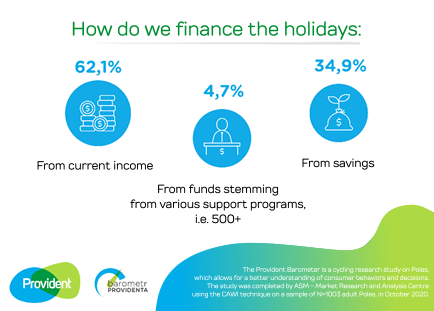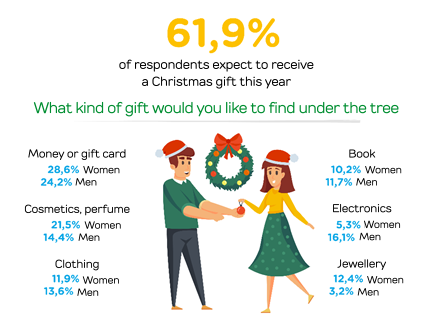On November 13, when the world celebrated World Kindness Day, John Lewis released his Christmas commercial, so the Christmas communication season can be considered officially launched. And, as every year, we can observe how, this time, the brands emerged from the traditional dilemma: which approach to Christmas in their communication to choose? A light and humorous note? Serious, touching deep emotions? On a rich and lavish scale? Traditional, using all available clichés and symbols? How much Christmas kitsch will be present? And how many attempts to break away from this and show the “true face” of Christmas?
This year there is an additional dilemma – whether and how to reflect the COVID reality in communication? And as Peter Cross, customer experience director at John Lewis Partnership admits, the dilemma was also about whether to make any special Christmas communication at all? Due to the pandemic, the company is implementing cost-cutting measures and John Lewis stores in the UK are currently closed. However, it was decided that consumers are waiting for this, and the brand’s Christmas communication would be part of a wider shift in positioning – towards a greater commitment to doing good.
A year different than the ones we knew
To write that these holidays will be different is like not writing anything in the context of the passing year. So let’s take a look – what will change exactly? One of the main aspects of the change is the planned spending and consumption levels for the holidays. According to the PROVIDENTA Barometer, Poles are planning their holidays much more frugally this year. On average, they want to spend PLN 744.39 on them, compared to PLN 1700 spent in 2019! The radically lower amount of planned expenses results from both the willingness or necessity to save as well as the probable lack of possibility to celebrate the holidays in a large family group, with numerous social meetings before and during the holidays.

The highest amount of money for Christmas is to be spent by people aged 35-49 – their planned average budget slightly exceeds PLN 800. At the other extreme are the youngest respondents, who, on average, want to spend less than PLN 600.
The majority – as much as 62% – want to finance this year’s star from their current income, i.e. from their salaries, pensions or alimony. Every 3rd respondent intends to take advantage of accumulated savings. This is particularly popular among young respondents, who often do not yet have a stable source of income. Among people under 24 years of age, more than half intend to use savings they had stashed away.

62% of respondents expect to find presents under the Christmas tree – but only 22% of them are sure of it. This is a much smaller percentage than in previous years – in the last two editions of the survey about 80 percent of respondents waited for Santa Claus. This year, by far the most desired gift (up to PLN 200) is money or gift cards for shopping, regardless of gender or age.

Are we waiting for the magic of Christmas in advertisements this year?
Kantar in the UK has been conducting research into the reception of Christmas ads for several years. Last year people said that ads are an important part of building the Christmas mood and as much as 46% of respondents declared that they are waiting for them to appear on air. The research also showed that the Christmas ads are among those that arouse the most emotions (measured by the indicator, the so called expressiveness, or reactions on people’s faces during viewing).
This year’s measurement shows clear declines – 30% of people are waiting for Christmas ads. Similarly to Poland, a significant proportion of British consumers – 39% – anticipate the need to cut back on Christmas spending and therefore perhaps lower expectations for Christmas communication, which, in addition to the festive emotions, also includes pressure to buy things that we cannot afford this year. Only 11% of British respondents are sure that Christmas will be good this year.
So how to communicate and build a festive atmosphere in a year of clearly lowered social moods? Looking at the Christmas campaigns we have started, we can say that just like in life – we have different ways of dealing with stress and difficult situations. Stressful situations can provoke us to suppress and avoid thinking about what is difficult, they can also mobilize us to deal with difficulties, and sometimes make us focus on our emotions in order to relieve the tension caused by a stressful situation. Yes, brands have decided to adopt different communication strategies and refer to different motivations. Some of them directly refer to the pandemic situation and new operating conditions, others focus on what they think is most important during the holidays, regardless of the circumstances. Still others try to bring some humor and lightness to Christmas advertisements.
Christmas Advertising A.D.2020
Let this Christmas be as it has always been – magical!
Some brands are trying to create a festive atmosphere without worrying about the circumstances, as if nothing has changed over the past year. For some they will be inadequate and for others will bring the expected respite from current hardships and sorrows. This is how the Polish brand Apart decided to communicate, and the British Agros – conjured up a festive mood in their advertisement. Without additional meanings and deeper messages, assuming that Christmas is simply about the unique atmosphere and climate.
Let us do good!
A large group of brands have decided on a deeper message and encourage giving for Christmas – one of the most universal themes and views on the essence of Christmas. Not on the high street emphasizes the importance of small gestures and small pleasures in everyday life. And on the occasion of Christmas, their communication is also becoming a kind of appeal for support of small entrepreneurs who contribute to the magical atmosphere of Christmas. Boots, on the other hand, remains within its area of competence and on the occasion of the Christmas, allocating GBP 1 million to the fight against hygiene poverty and is encouraging support for those in need by injecting money into the banks for hygiene products. Coca Cola, on the other hand, is encouraging to focus on giving the most exceptional things on this holiday – that is, to be present, attentive and with your loved ones. In his Christmas campaign , John Lewis & Waitrose is encouraging everyone to make small gestures of kindness that can make a big difference in the world. The brand also has a charitable aspect – the brand wants to donate GBP 5 million and support 100,000 families in need.
The most important thing is to be yourself! Let’s do our job!
As every year, there are also brands that first and foremost are being themselves, and their Christmas communication is a look at Christmas through their eyes – through the prism of specific promises (as in the case of Tyskie) or the nature of the brand (as in the case of TK Maxx or Pepsi Max). VERY.CO.UK, on the other hand, points out that Christmas is not only the perfect moments at the family table, as the images on TV try to convince us, but also a lot of cool moments of preparation, even or maybe precisely because not everything goes smoothly and according to the perfect plan.
What a year it was!
There are also brands that do not avoid referring to the specifics of this year. ASDA directly refers to the situation of the pandemic by saying that this holiday season will probably be more modest, but it tries to convince you that thanks to attractive prices, with ASDA they can still be great. Tesco, in turn, in a humorous way encourages you to indulge in your various whims, because after such a year, everyone deserves some pleasure, and Santa Claus will overlook everything we did wrong.
It will still be beautiful! We will not give in!
Zalando and Amazon are examples of brands that have decided to make an emotional summary of this difficult year during the Christmas communication. Instead of including their special offers for the holiday season, this year they decided to refer very directly to the difficult emotions of the pandemic experience. Zalando tries to pour some optimism by saying that we will be able to cuddle again soon. It draws attention to what we are lacking in the COVID reality of distancing ourselves from others – that is, physical closeness and direct showing of our feelings. Amazon, on the other hand, with the strong message “life goes on”, using Queen’s timeless hit, tries to add strength to survive this difficult time. In both cases, there is no clear role of the brand in this communication. Both retailers have opted for a strong emotional message, with no connection to their area of competence.
And although the year is special, a lot depends on our inner attitude to how we want to experience Christmas – as McDonalds convinces us – encouraging us in its campaign to let our inner child enjoy Christmas time. This is another campaign using a hit – this time the song “Forever Young” in a new arrangement and performance by Becky Hill. A subsequent one with a charity element as well – McDonalds will fund 5 million meals and Becky Hill will donate 10 pence to charity each time her song is downloaded.
Sources:
https://media-provident.pl/pr/592808/w-tym-roku-swieta-beda-oszczedne
https://www.kantar.com/uki/inspiration/advertising-media/dont-let-covid-steal-christmas-2020

